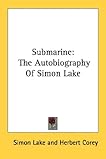A Psalm of David.
Blessed be the LORD, my rock,
Who trains my hands for war,
And my fingers for battle;
Psalm 144:1
In the movie Master and Commander: The Far Side of the World, when crew of the HMS Surprise encounters the French privateer Acheron, the sailing master Mr. Allen asks Captain Jack Aubrey for an attack course. Jack replies, "Lay me alongside a pistol shot."
In the 1700s and 1800s, a pistol shot's distance was an optimistic 50 yards. You can find gunnery tables that report respectable distances for cannon fire, yet captains preferred to close within a pistol shot. This was for two reasons, accuracy and paradoxically self-defense.
Let's look at the matter of accuracy. Naval warfare expert Sam Willis in his book, Fighting at Sea in the Eighteenth Century: The Art of Sailing Warfare, says that actually hitting a ship took a lot of effort all all but close range. There are stories about gunners firing scores of cannonballs without a single hit and the opposing crew hearing the rounds roar overhead.
If you've ever been in a small boat on a large lake or in the ocean, you know that the sea is continually in motion. Even on days when the sea seems as smooth as glass, there are still gentle undulations. Now imagine a battle in moderate seas where the deck is really pitching. Firing a cannon from the deck of a continually tilting vessel adds a level of complexity that land-bound artillerymen do not experience.
With the cannon's muzzle continually rising and dipping, gunners had to learn when to fire. If they were aiming to punch a hole at or below the water line, then they fired while the muzzle was dipping. When they aimed for the rigging and the sails, which by the way is a much much larger target than the hull, then they would fire while the muzzle was either on the rise or depending on the elevation, just when the muzzle begins to dip at the top of its rise.
In the 1700s, to avoid being crushed by the recoiling cannons, gunners stood off to the side of the piece and fired in using a yard-long wooden handle tipped with burning slow match fuse. This was called the linstock. Sighting the cannon and then firing from the side was not a big issue for land-bound cannon.
However, once a ship's gunner moved away from a naval cannon, the sight picture changed. Therefore experienced gunners had to tell at a glance when to fire once the cannon's elevation was set. After the linstock ignited the powder in the touch hole, the cannon's main powder charge didn't ignite immediately, so good naval gunners also had to account for the delay in firing as the muzzle rose and dipped. More on the process of sighting or laying a cannon in a later post.
Now as to the matter of closing with an enemy for defensive purposes, remember that ships of this time were build out of wood. A cannonball's high velocity at close ranges allows it to punch a hole through a wooden hull much in the same was as a paper punch does to paper. However, from further distances, the cannonball's lower velocity not only penetrated the wood, it also created a spray of large flying splinters that could and did impale people.
Finally, in order to deliver massive firepower, captains maneuvered their vessels so the maximum number of guns could fire and thus increase the chance at hitting something. Fleets practiced maneuvers allowing ships to queue up so they could pass their enemies in a line, presenting a continuous broadside of hundreds of guns. The goal was to fire as many cannon as possible as often as possible.
To conserve gunpowder, crews were continually drilled in the process of loading, aiming, and firing their cannons without actually shooting them. Captains who were eager to improve their fighting chances, would purchase powder with their own pay. This was a wise investment as skilled gun crews handiwork could help take a vessel as a prize and the captains could recoup their loss. They knew that crews who could actually fire their cannons in practice gained confidence in their skill and speed as they trained their hands for war.
Tuesday, March 16, 2010
Subscribe to:
Post Comments (Atom)














No comments:
Post a Comment